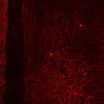(Press-News.org) A supernova is the cataclysmic death of a star, but it seems its remnants shine on. Astronomers have found a pulsating, dead star beaming with the energy of about 10 million suns.
This is the brightest pulsar -- a dense stellar remnant leftover from a supernova -- ever recorded, and was seen using NASA's Nuclear Spectroscopic Telescope Array, or NuSTAR.
Lawrence Livermore LLNL researchers were involved in the design and testing of the NuSTAR X-ray optics.
"You might think of this pulsar as the 'Mighty Mouse' of stellar remnants," said Fiona Harrison, the NuSTAR principal investigator at the California Institute of Technology in Pasadena, Calif. "It has all the power of a black hole but with much less mass."
Pulsars belong to a class of stars called neutron stars. Like black holes, neutron stars are the burnt-out cores of exploded stars, but puny in mass by comparison. Pulsars are neutron stars that send out beams of light. As the star spins, these beams intercept Earth-like lighthouse beacons, producing a pulsed signal.
The discovery is helping astronomers better understand mysterious sources of extreme X-rays, called ultraluminous X-ray sources, or ULXs. Before now, all ULXs were thought to be actively feeding black holes. In a new report in the Oct. 9 issue of Nature, data from NuSTAR show that at least one ULX, about 12 million light-years away, is not a black hole but a pulsar.
"The pulsar appears to be eating the equivalent of a black hole diet," Harrison said.
ULXs are generally thought to be black holes feeding, or "accreting," off companion stars. While most are thought to have masses up to 50 to 100 times that of our sun, some ULXs are suspected to be even heftier. Researchers are trying to determine if these larger black holes are indeed the long-sought "medium-size" black holes -- missing links between smaller, stellar-size black holes and the gargantuan ones that dominate the hearts of all galaxies.
NuSTAR didn't initially set out to study the two ULXs in the Messier 82 (M82) galaxy, or "Cigar," galaxy. It had been observing a recent supernova in M82, when astronomers serendipitously noticed bright X-rays coming from a point nearby -- what turned out to be the ULX called M82 X-2. The NuSTAR team was shocked to find that this source had a pulse. Black holes don't pulse, but pulsars do.
NASA's Chandra X-ray Observatory and Swift satellite also had been monitoring M82 to study the same supernova and were able to confirm that the intense X-rays of the ULX called M82 X-2 were coming from a pulsar.
The key to NuSTAR's discovery lied in its sensitivity to X-rays in the highest-energy ranges, as well as its ability to time the arrival of X-rays. This timing capability allowed the astronomers to measure a pulse rate from M82 X-2 of 1.37 seconds. They also measured its energy output at the equivalent of 10 million suns, or 10 times more than what was measured before -- a big punch for something about the mass of the sun.
How is this dead star radiating so feverishly? Astronomers aren't sure, but they say it is likely due to a lavish feast of the cosmic kind.
In the future, the NuSTAR researchers also will look at more ULXs, and it's possible they could turn up more pulsars. At this point it is not clear if the M82 X-2 is an oddball, or if perhaps more ULXs beat with the pulse of dead stars.
INFORMATION:
NuSTAR is a Small Explorer mission led by the California Institute of Technology in Pasadena and managed by NASA's Jet Propulsion Laboratory, also in Pasadena, for NASA's Science Mission Directorate in Washington D.C.
Founded in 1952, Lawrence Livermore National Laboratory (http://www.llnl.gov) provides solutions to our nation's most important national security challenges through innovative science, engineering and technology. Lawrence Livermore National Laboratory is managed by Lawrence Livermore National Security, LLC for the U.S. Department of Energy's National Nuclear Security Administration.
NASA's Aqua satellite passed over Super Typhoon Vongfong as it tracked through the Philippine Sea on Oct. 9. Instrument aboard Aqua captured visible and infrared images of the now Category 4 Super Typhoon.
Two instruments aboard NASA's Aqua satellite provided visible and infrared data on the Super Typhoon: The Moderate Resolution Imaging Spectroradiometer or MODIS and the Atmospheric Infrared Sounder or AIRS instrument, respectively. MODIS captured a visible image of Super Typhoon Vongfong on Oct. 9 at 04:25 UTC (12:25 a.m. EDT) that showed two concentric eyewalls with ...
Neurodevelopmental disorders such as Down syndrome and autism-spectrum disorder can have profound, lifelong effects on learning and memory, but relatively little is known about the molecular pathways affected by these diseases. A study published by Cell Press October 9th in the American Journal of Human Genetics shows that neurodevelopmental disorders caused by distinct genetic mutations produce similar molecular effects in cells, suggesting that a one-size-fits-all therapeutic approach could be effective for conditions ranging from seizures to attention-deficit hyperactivity ...
VIDEO:
Behavior experiments in which flies were given the choice between wild-type and mutant fermentation headspace in the middle of the experiment, and they migrate accordingly.
Click here for more information.
The familiar smell of beer is due in part to aroma compounds produced by common brewer's yeast. Now, researchers reporting in the Cell Press journal Cell Reports on October 9th have discovered why the yeast (formally known as S. cerevisiae) make that smell: the scent attracts ...
Oxytocin has been called the "love hormone" because it plays an important role in social behaviors, such as maternal care and pair bonding. In a study published by Cell Press on October 9th in the journal Cell, researchers uncover oxytocin-responsive brain cells that are necessary for female social interest in male mice during estrus—the sexually receptive phase of their cycle. These neurons, found in the prefrontal cortex, may play a role in other oxytocin-related social behaviors such as intimacy, love, or mother-child bonding.
"Our findings suggest that social ...
Oxytocin, the body's natural love potion, helps couples fall in love, makes mothers bond with their babies, and encourages teams to work together. Now new research at Rockefeller University reveals a mechanism by which this prosocial hormone has its effect on interactions between the sexes, at least in certain situations. The key, it turns out, is a newly discovered class of brain cells.
"By identifying a new population of neurons activated by oxytocin, we have uncovered one way this chemical signal influences interactions between male and female mice," says Nathaniel ...
Researchers at Yale School of Medicine have uncovered a molecular process in the brain known to control eating that transforms white fat into brown fat. This process impacts how much energy we burn and how much weight we can lose. The results are published in the Oct. 9 issue of the journal Cell.
Obesity is a rising global epidemic. Excess fatty tissue is a major risk factor for type 2 diabetes, cardiovascular disease, hypertension, neurological disorders, and cancer. People become overweight and obese when energy intake exceeds energy expenditure, and excess calories ...
Harvard stem cell researchers today announced that they have made a giant leap forward in the quest to find a truly effective treatment for type 1 diabetes, a condition that affects an estimated three million Americans at a cost of about $15 billion annually:
With human embryonic stem cells as a starting point, the scientists are for the first time able to produce, in the kind of massive quantities needed for cell transplantation and pharmaceutical purposes, human insulin-producing beta cells equivalent in most every way to normally functioning beta cells.
Doug Melton, ...
CAMBRIDGE, Mass. (October 9, 2014) – Within almost every human cell is a nucleus six microns in diameter—about one 300th of a human hair's width—that is filled with roughly three meters of DNA. As the instructions for all cell processes, the DNA must be accessible to the cell's transcription machinery yet be compressed tightly enough to fit inside the nucleus. Scientists have long theorized that the way DNA is packaged affects gene expression. Whitehead Institute researchers present the first evidence that DNA scaffolding is responsible for enhancing and ...
BOSTON – The surprising discovery of a previously unidentified class of lipid molecules that enhance insulin sensitivity and blood sugar control offers a promising new avenue for the prevention and treatment of type 2 diabetes.
The new findings, made by a team of scientists from Beth Israel Deaconess Medical Center (BIDMC) and the Salk Institute, are described in the October 9 online issue of the journal Cell.
"We were blown away to discover this completely new class of molecules," says senior author Barbara Kahn, MD, Vice Chair of the Department of Medicine ...
Beer yeasts produce chemicals that mimic the aroma of fruits in order to attract flies that can transport the yeast cells to new niches, report scientists from VIB, KU Leuven and NERF in the reputed journal Cell Reports. Interestingly, these volatile compounds are also essential for the flavor of beverages such as beer and wine.
Kevin Verstrepen (VIB/KU Leuven): "The importance of yeast in beer brewing has long been underestimated. But recent research shows that the choice of a particular yeast strain or variety explains differences in taste between different beers and ...



